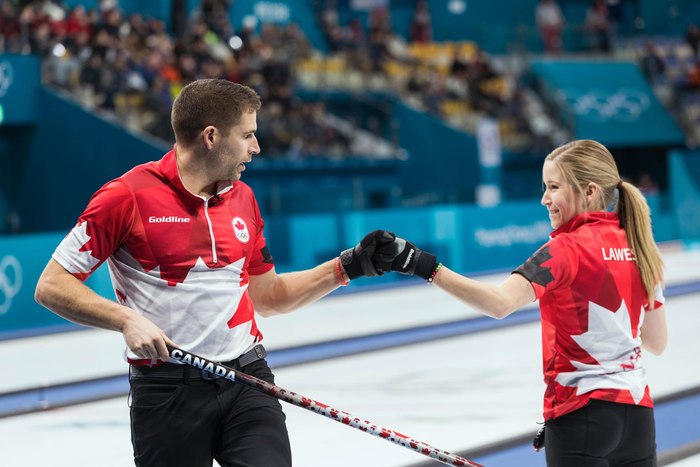
By Dr. Vandy Pacetti-Donelson |
According to International Olympic Committee (IOC) President Thomas Bach “Sport is one of the most powerful platforms for promoting gender equality and empowering women and girls” and affirms that the “IOC remains committed to using sport to advance the rights and well-being of women and girls around the world.” These statements can be found in the opening message of the publication, IOC Gender Equality Review Project.
Joint Initiative
This project was developed through a joint initiative of the IOC Women in Sport and Athletes’ Commissions, which formed the IOC Gender Equality Working Group. They conducted a comprehensive review of gender equality across the Olympic movement in conjunction with Olympic stakeholders to provide a solutions-based approach to achieving gender quality on and off the field of play.
Great Strides
The IOC has made strides in advancing gender equality within the Olympic movement. The organization has worked to balance gender numbers of competing athletes and promoted awareness and advocacy campaigns. They have also created leadership development programs in order to appoint more women to leadership roles within administration and governance. This initiative provides a focused opportunity to makes recommendations to effect world-wide change. The project makes 25 recommendations that cover five key themes related to gender equality: Sport, Portrayal, Funding, Governance, and HR, Montoring and Communications.
THEME 1: SPORT
- Ensure Olympic Games participation has full gender equality across all sports, disciplines, and events with equal participation of both genders.
- Ensure that Competition formats and technical rules (determinations of distances, duration of segments, number of rounds, etc.) are as equal as possible between women and men.
- Ensure that uniforms reflect the technical requirements of the sport and uniform styles are based on athlete input and technical sport rules.
- Ensure the quality of sport-specific equipment is the same between genders.
- Ensure balanced gender representation among technical officials.
- Ensure balanced gender representation among coaches selected to participate at the Games.
- Ensure that Venues and facilities provide equal access to both women’s and men’s events.
- Ensure equal representation of women’s and men’s events in the competition schedule per day and per session.
- Ensure equal medical testing, treatment, and studies on both genders when addressing health and safety issues.
- Safeguard against gender discrimination, harassment, and abuse.
- Assist female Olympians with career transitions for post-competition careers.
THEME 2: Portrayal
- Balanced portrayal of both genders in media by establishing principles and guidelines for all forms of communication.
- Expectation that Organizing Committees for future Olympic Games will note specifically how equal gender portrayal will be carried out.
- Implement mechanisms to monitor objective portrayal of both genders in media.
THEME 3: Funding
- Ongoing allocations in the operations budget to support gender equality goals, projects, governance, and administration.
- Encourage National Olympic Committees and International Federations to allocate a specific funding to gender equality initiatives.
- Encourage National Olympic Committees and International Federations to identify, track, and take measures to close the gender pay gap.
THEME 4: Governance
- Establish strategic initiatives to increase female representation in governance roles through leadership development activities.
- Ensure a commitment to a diverse and balanced membership within the IOC, its executive board, and leadership positions.
- All Olympic Movement partners should develop strategies for gender-balanced representation in governing bodies.
- Decrease marginalization within the IOC and the Olympic Movement by ensuring that women have roles of influence and decision-making within the organization’s administration and governance.
- Establish Gender Equality leadership through the appointment of a Gender Equality Program Manager and a Diversity Officer.
THEME 5: HR, Monitoring and Communication
- Develop an inclusive organizational culture and diversity leadership with policies and practices that promote and sustain gender equality in the workplace.
- Implement a monitoring and tracking system to measure and evaluate gender equality activity and results.
- Create awareness and empower administrators, athletes, games officials, and decision makers through the development of a comprehensive communications plan about gender quality initiatives.
The implementation of this initiative began in 2018 and the Tokyo Games already demonstrating its effects with full gender representation across all 206 teams with the highest percentage of women participating in a Games at 48.8% participation. Four sports will have gender-balanced events for the first time (canoeing, rowing, shooting, and weightlifiting).
“Gender equality within the Olympic Movement creates opportunities for women to participate in public society and allows for women to contribute in roles of influence and decision-making responsibilities. It encourages physical activity and healthy lifestyles for women and girls. It encourages diversity of opinion, a key component of good governance and risk management.”—Marisol Casado, Chair, IOC Gender Equality Review Project.
We have a responsibility in sport to create and sustain the level playing field that we say sport provides.
Dr. Vandy Pacetti-Donelson is an Assistant Professor and Director of the Library/Archivist at the United States Sports Academy in Daphne, AL.